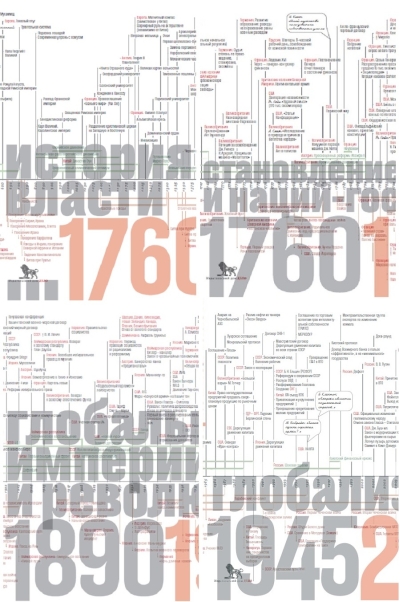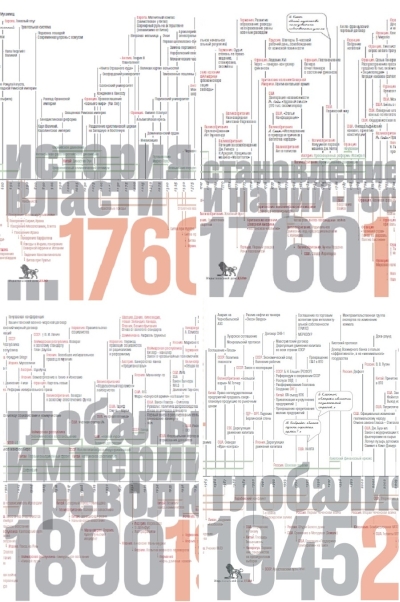Sources of Social Power. In 4 volumes. Volume 1: The History of Power from Its Origins to 1760. Volume 2: The Making of Classes and Nation-States, 1760-1914. Volume 3: Global Empires and Revolution, 1890-1945. Volume 4: Globalizations, 1945-2011.
99.99 €
Out of stock
Distinguishing four sources of power in human societies (ideological, economic, military and political), this multi-volume work traces their relationships throughout history.
Volume I examines the relationships between these sources of power in Neolithic times, the ancient Near Eastern civilizations, the classical Mediterranean and medieval Europe, up to the Industrial Revolution in England. It offers explanations of the origins of the state and social stratification, of the city-state, of the militaristic empire and the constant interaction between them, of the world's salvation religions and, finally, of the special dynamism of medieval and early modern Europe. The concluding chapters offer general conclusions on the nature of social development in general, the different forms of social community and the role of class and class struggle in history. This volume includes a new preface with the author's assessment of the influence and legacy of his work. Volume two of Michael Mann’s analytical history of social power examines power relations between the Industrial Revolution and the First World War, focusing on France, Great Britain, Habsburg Austria, Prussia-Germany, and the United States. Drawing on solid empirical research, he develops original theories of nation building and nationalism, class conflict, the modern state, and modern militarism. He also emphasizes the social and historical complexity of the phenomena under consideration, without fear of generalization. Michael Mann examines human society as a “structured disorder” and attempts to develop a sociological theory that corresponds to this understanding. This theory is crowned by a final chapter that presents an original explanation of the causes of the First World War. First published in 1993, the new edition of Volume Two includes an updated Preface in which the author analyzes the influence and mark left by this work on historiography. In Volume Three of Michael Mann’s analytical history of social power, he begins with the global empires of the 19th century and continues with the global history of the 20th century. up to 1945, Mann focuses on the interrelations of the development of capitalism, nation states, and empires. Volume 3 also discusses the Great Divergence between the trajectories of the West and the rest of the world, the self-destruction of European and Japanese power in two world wars, the Great Depression, the rise of American and Soviet power, the rivalry between capitalism, socialism, and fascism, and the triumph of reformed and democratic capitalism. In Volume 4, the author describes and analyzes all the significant events and phenomena of world history from the end of World War II to the present day, from the emergence of the bipolar world order and the beginning of the Cold War to the global economic crisis of recent years. The book is divided into 13 chapters, each of which is devoted to the history and analysis of world history over a clearly defined period of time, for example, the first chapter deals with the collapse of the colonial world order, the formation of the Bretton Woods monetary and financial system and the beginning of the confrontation between the two superpowers (the USA and the USSR), the second - the analysis of post-war economic development, the formation of the concept of the "welfare state" and interracial conflicts. The last chapters talk about the global economic crisis, the problems of global warming and other pressing issues of our time. In general, the content of the book can be seen even at first glance at the cover, which, like a horizontal graph, each division of which is one year (from 1945 to 2014), lists the main events of world history for each year. Michael Mann's new work will be of interest to anyone interested in world history, political science, sociology and international relations.
Volume I examines the relationships between these sources of power in Neolithic times, the ancient Near Eastern civilizations, the classical Mediterranean and medieval Europe, up to the Industrial Revolution in England. It offers explanations of the origins of the state and social stratification, of the city-state, of the militaristic empire and the constant interaction between them, of the world's salvation religions and, finally, of the special dynamism of medieval and early modern Europe. The concluding chapters offer general conclusions on the nature of social development in general, the different forms of social community and the role of class and class struggle in history. This volume includes a new preface with the author's assessment of the influence and legacy of his work. Volume two of Michael Mann’s analytical history of social power examines power relations between the Industrial Revolution and the First World War, focusing on France, Great Britain, Habsburg Austria, Prussia-Germany, and the United States. Drawing on solid empirical research, he develops original theories of nation building and nationalism, class conflict, the modern state, and modern militarism. He also emphasizes the social and historical complexity of the phenomena under consideration, without fear of generalization. Michael Mann examines human society as a “structured disorder” and attempts to develop a sociological theory that corresponds to this understanding. This theory is crowned by a final chapter that presents an original explanation of the causes of the First World War. First published in 1993, the new edition of Volume Two includes an updated Preface in which the author analyzes the influence and mark left by this work on historiography. In Volume Three of Michael Mann’s analytical history of social power, he begins with the global empires of the 19th century and continues with the global history of the 20th century. up to 1945, Mann focuses on the interrelations of the development of capitalism, nation states, and empires. Volume 3 also discusses the Great Divergence between the trajectories of the West and the rest of the world, the self-destruction of European and Japanese power in two world wars, the Great Depression, the rise of American and Soviet power, the rivalry between capitalism, socialism, and fascism, and the triumph of reformed and democratic capitalism. In Volume 4, the author describes and analyzes all the significant events and phenomena of world history from the end of World War II to the present day, from the emergence of the bipolar world order and the beginning of the Cold War to the global economic crisis of recent years. The book is divided into 13 chapters, each of which is devoted to the history and analysis of world history over a clearly defined period of time, for example, the first chapter deals with the collapse of the colonial world order, the formation of the Bretton Woods monetary and financial system and the beginning of the confrontation between the two superpowers (the USA and the USSR), the second - the analysis of post-war economic development, the formation of the concept of the "welfare state" and interracial conflicts. The last chapters talk about the global economic crisis, the problems of global warming and other pressing issues of our time. In general, the content of the book can be seen even at first glance at the cover, which, like a horizontal graph, each division of which is one year (from 1945 to 2014), lists the main events of world history for each year. Michael Mann's new work will be of interest to anyone interested in world history, political science, sociology and international relations.
See also:
- All books by the publisher
- All books by the author











